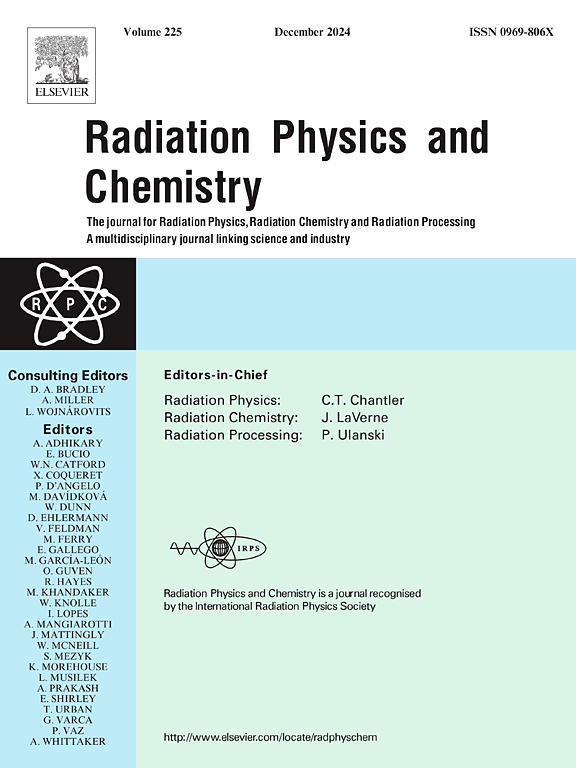Impact of nuclear cross-section libraries on neutron beam quality and dose distribution in accelerator-based BNCT: a full-process Monte Carlo study
IF 2.8
3区 物理与天体物理
Q3 CHEMISTRY, PHYSICAL
引用次数: 0
Abstract
This work presents a full-process Monte Carlo investigation of how evaluated nuclear cross-section libraries influence neutron beam characteristics and dose distribution in accelerator-based boron neutron capture therapy. Simulations were performed using PHITS with three representative combinations of proton, neutron, photon, and thermal scattering data derived from ENDF/B-VII.1, ENDF/B-VIII.0, and JENDL-5.0. The modeling sequence includes proton–lithium neutron production, moderation and filtering in a beam shaping assembly, and dose deposition in both a homogeneous soft-tissue-equivalent phantom and a voxelized adult female head phantom based on ICRP 110. The results reveal that variations in nuclear data, particularly for the基于加速器的BNCT中核截面库对中子束质量和剂量分布的影响:全程蒙特卡罗研究
这项工作提出了一个完整的过程蒙特卡罗研究如何评估核截面库影响中子束特性和剂量分布在加速器为基础的硼中子捕获治疗。利用PHITS对ENDF/B-VII的质子、中子、光子和热散射数据的三种代表性组合进行了模拟。1, ENDF / B-VIII。0, JENDL-5.0。建模序列包括质子-锂中子的产生,束整形组件中的调节和过滤,以及基于ICRP 110的均匀软组织等效幻影和体素化成年女性头部幻影中的剂量沉积。结果表明,核数据的变化,特别是7Li(p,n)7Be反应,导致中子谱、超热通量和剂量相关量的显著差异。关键的临床指标,如优势深度剂量率和治疗时间显示高达13%的偏差,突出了核数据不确定性从源建模到最终剂量估计的传播。这项研究证明了核数据选择如何影响光束设计和剂量估计精度,强调在基于模拟的光束线开发和验证中需要仔细考虑截面库。
本文章由计算机程序翻译,如有差异,请以英文原文为准。
求助全文
约1分钟内获得全文
求助全文
来源期刊

Radiation Physics and Chemistry
化学-核科学技术
CiteScore
5.60
自引率
17.20%
发文量
574
审稿时长
12 weeks
期刊介绍:
Radiation Physics and Chemistry is a multidisciplinary journal that provides a medium for publication of substantial and original papers, reviews, and short communications which focus on research and developments involving ionizing radiation in radiation physics, radiation chemistry and radiation processing.
The journal aims to publish papers with significance to an international audience, containing substantial novelty and scientific impact. The Editors reserve the rights to reject, with or without external review, papers that do not meet these criteria. This could include papers that are very similar to previous publications, only with changed target substrates, employed materials, analyzed sites and experimental methods, report results without presenting new insights and/or hypothesis testing, or do not focus on the radiation effects.
 求助内容:
求助内容: 应助结果提醒方式:
应助结果提醒方式:


